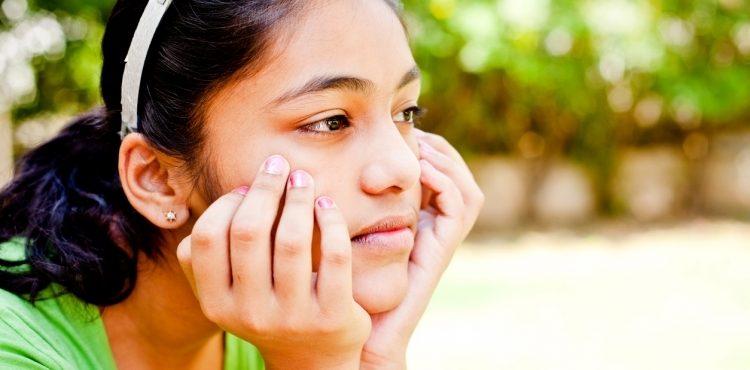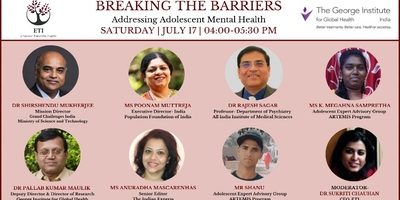
World Mental Health Day 2019: focus on adolescent suicide prevention
Authored by Mercian Daniel, Program Manager, Mental Health, The George Institute India. Views expressed are personal.
Adolescents and young people represent over a quarter of the world population, of which a substantial number live in developing countries. Their number is set to rise in the coming decade. The national census data of India indicate that this age group constitutes almost a third of the country’s population. Mental health of this vast numbers is a neglected area and it is a matter of concern that suicide is emerging as the leading cause of death among this group in India. According to the Lancet Commission on Adolescent Health and Well-being, in absolute numbers 62,960 deaths due to suicide was reported among those aged 10-24 years in the country.
Suicide often co-occur with depressive disorders, and almost 3 million youngsters in this age group have suffered health loss due to depressive disorders. The early periods of childhood and adolescence are crucial in the development of an individual’s mental health, as experiences during this period largely shape the coming years. The brain is immensely malleable in response to the social environment in the first two decades of life and mental health is the product of psychosocial, environmental, biological and genetic factors interacting with neurodevelopmental processes. Therefore, it is crucial that these years unfold in nurturing environments, which promote mental health and prevent mental disorders.
A number of factors can trigger adolescent suicides, these can be untreated depression, substance abuse, reduced family support due to changing family structures, emotional disturbances in friendship and opposite or same-gender relationships, exam related expectations from parents, violence and bullying at school or in the community, career-related dissatisfaction, dispute with parents etc.
It is befitting that the theme of the world mental health day this year is “Working together to prevent suicide” as increasing rates of suicides among adolescents and young people should be reprioritised as a global public health concern and challenge. Since individuals among this age group have the poorest healthcare coverage, the primary healthcare system could provide suicide prevention and mental health services through the existing adolescent-friendly health clinics. As it is erroneously thought that adolescence comprises the healthiest phase of life, this group have attracted limited mental health funding and resources. However, the fact that suicides are a leading cause of death among adolescents it suggests that mental health is a growing epidemic in this age group. Therefore this should be a wake-up call for India to invest in their largest generation of adolescents and young people (~365 million), particularly given that a significant proportion of these deaths can be averted. Thus, both from a public health and human rights perspective, even a single adolescent and young individual dying of suicide demands global and national attention.
We at The George Institute for Global Health, are undertaking mental health programs that address mental health issues including stigma, self-harm and suicidal behaviour among adolescents living in vulnerable and disadvantageous circumstances, i.e. in urban slums. Even within the society, urban slums are particularly at a disadvantage due to the lack of proper health care facilities, limited or no employment opportunities, additional stressors, and poor living conditions which include overcrowding, poor sanitation and hygiene and green spaces. The program understands the mental health risk as well as the protective and resilience factors among this group – from both individual and community perspectives, and answers such critical questions. Additionally, primary healthcare workers, such as medical officers of primary healthcare centres, ASHAs, and Anganwadi workers are engaged in rolling out these projects. Learnings from these projects should contribute in preventing the increasing incidence of suicide among adolescents and young individuals in the country, and help identify a suitable model of primary mental healthcare delivery in these settings.


